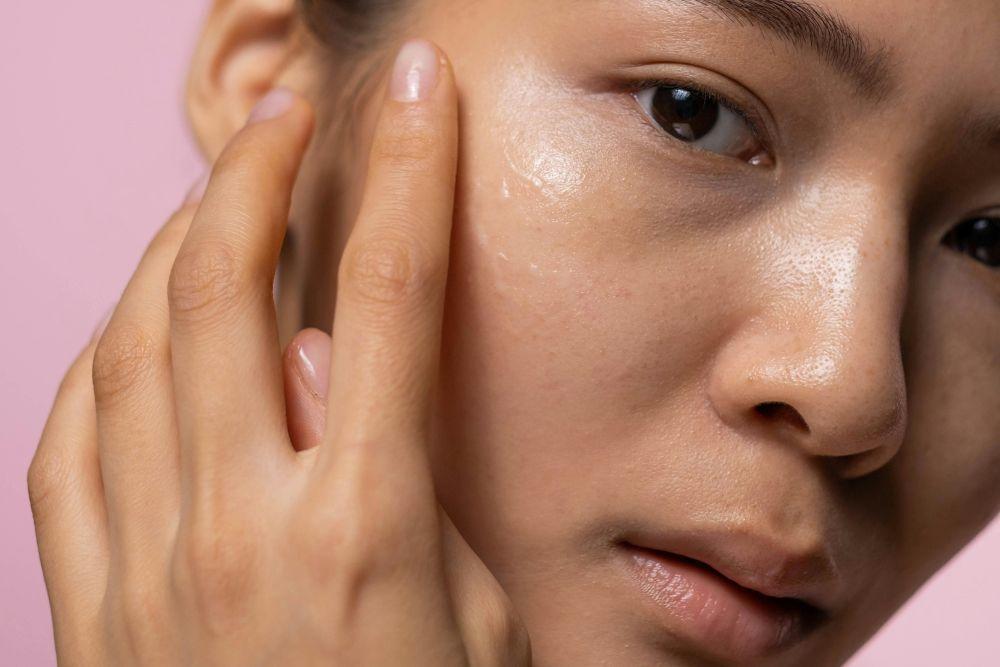The latest skin rejuvenation agent: NAD+
Posted by Den Yi Ann on 18th Mar 2024

While ageing is a natural process, you can influence how well you age. Let’s explore the latest skin rejuvenation agent – NAD+.
How you age depends on many factors, including your nutrition and lifestyle. Research shows nicotinamide adenine dinucleotide (NAD) can reverse visible signs of ageing and improve your overall health. Boosting your skin’s concentration of NAD shows great promise in the fight against premature skin ageing.
Your skin deserves respect
It’s strange to think that our largest organ – our skin – is the one we wear on the outside. It’s a very complex system with many structures and types of cell that all have different functions. It’s probably also the organ we think about least in terms of health, yet it’s our frontline defence against the world.
It performs many vital functions, including:
- protection from the sun’s UV rays and environmental aggressors
- keeping water in our bodies and helping to regulate our temperature
- It’s the organ of sensation – both of pleasure and of pain
- And, of course, it is an important expression of our beauty and wellbeing
As we age, skin cellular function becomes less efficient, DNA damage increases and toxins accumulate in the skin. This can lead to loss of strength, elasticity and fragile skin, not to mention dark spots, wrinkles, and fine lines. Then, the rate of cell turnover also declines, so our bodies don’t shed dead skin cells as they did in our younger years, resulting in a duller, rougher complexion.
We can supply our body with the NAD it needs by supplementing it via nutritional supplementation. For skin, however, it’s best to get it by applying it directly.
Our skin needs our help
Unfortunately, despite being our largest organ, it is the last in line to receive vital nutrition from our diet. The reason we use skincare is to help it stay healthy and function by supplying it with the nutrients it needs via skin products.
What is NAD+?
Ready for a quick bio lesson?
Niacin (aka vitamin B3) is the precursor to NAD, which means it’s the main component your body uses to make NAD+.
NAD+ is the final, active form of niacinamide used by the body. NAD+ can be found in every cell in our body. It is a ‘helper’ molecule (coenzyme) that plays a vital role in all metabolic processes and for the sirtuin family of longevity genes. Got it?
The crucial role of NAD+ in our bodies
The importance of cellular NAD+ for a healthy body's metabolic process has been studied extensively.
The reason? It is known to be a very significant factor in regulating cell energy metabolism, its antioxidative properties, longevity genes, and its stress response.
This is also the reason NAD+ has quickly become one of the most progressive anti-ageing and cellular repair agents available, not to mention a celebrity wellness must-have.
What does NAD+ do?
- NAD+ helps the powerhouses of the cell (the mitochondria) generate energy for the body to carry out all biochemical reactions, including metabolism, DNA damage repair, ageing, cell death and gene expression.
- NAD+ is a powerful antioxidant that is highly effective at protecting cell membranes from harmful free radicals, compared to widely known vitamins such as C and E. Free radicals cause damage to cells, which can lead to inflammatory skin diseases such as rosacea, contact dermatitis and eczema.
- It is essential to maintain an optimal ratio of NAD+ in our bodies for mitochondrial function. This function is responsible for producing cellular energy (ATP).
- It also plays a crucial part in the manufacture of various lipids (fats), including ceramides, which are needed in skin regeneration and maintain healthy barrier function. Ceramides enhance the effectiveness of the skin’s natural barrier against external factors that affect the ageing process.
Why do we need NAD+ in our skincare?
Studies have shown that the levels of NAD+ in our cells decline as we grow older. So, supplementation of NAD+ - by applying it on our skin via a skin product - is crucial to regulate and maintain a stable and constant skin environment (homeostasis), as well as helping it to function effectively.
A vitamin B3 deficiency could affect the way your body uses NAD+ and enzymes. This could impact many important cell functions, such as controlling genes, maintaining calcium levels, repairing DNA, elimination of old skin cells, and preventing abnormal cell growth.
Depleted NAD+ levels in the body leads to sun sensitivity of the skin, as well as increasing the chances of cell senescence (where they stop dividing and functioning properly) and development of skin cancer.
1

Benefits of NAD in skin rejuvenation
It’s important to understand the role of skin cell renewal. This monthly process our skin undergoes is vitally important to its health, and it requires a significant amount of cellular energy.
It involves the creation of new skin cells, which travel up from the deeper layers of the skin, maturing and specialising as they travel to the surface. The old skin cells on the outermost surface are then shed through exfoliation and replaced by new, fresh skin cells, in a never-ending process. With age and skin-health issues, this slows down, causing many signs of ageing.
But, skin cell ageing can be delayed by replenishing cellular NAD+ levels. This can help to stimulate our sirtuin longevity genes and allow them to carry out cell repair, even after repeated exposure to oxidative stress from free radicals.
What’s more, good NAD+ levels help skin cells mature and become specialised more effectively. It also helps restore the important skin barrier functions while reducing skin redness.
Clinical study results show that applying vitamin B3 (the NAD+ precursor) is well tolerated by the skin and it can improve the appearance of ageing skin.
NAD therapy can help improve various skin concerns:
- Improved texture - reducing skin roughness, fine lines, pore size and wrinkles
- It also help improve its appearance, reducing hyperpigmentation (dark spots), skin yellowing, excess sebum (oil) and redness
- NAD helps to strengthen skin barrier functions
- It increases elasticity and addresses skin sagging and loss of volume
- Skin hydration and radiance improves
We hope you’re as excited as we are about the benefits of NAD+ and understand why it’s an essential ingredient you should be looking for in your skincare.
Let us introduce you to Invity’s NAD+ powered skincare.
Want to know more?
Read
NAD+ The Hottest Three Letters in Anti-Aging Skincare Now
Strengthen Your Immunity With NAD+
About the Author

Den Yi Ann
Ms. Ann is MScRes in transdermal drug delivery from School of Pharmacy at University of Reading. Ann also obtained her BSc (Hons) in Cosmetic Science from the University of the Arts London, and a Diploma in Beauty Therapy. She is passionate about skincare and has experience in product formulation, color cosmetics, beauty treatments, and skin analysis.
References
- Bouwstra, J. (2002) Structure of Stratum Corneum Lipid Layers and Interactions with Lipid Liposomes. In: Forster, T. Cosmetic Lipids and the Skin Barrier. New York: Marcel Dekker.
- Oblong JE. The evolving role of the NAD+/nicotinamide metabolome in skin homeostasis, cellular bioenergetics, and aging. DNA Repair (Amst). 2014;23:59-63.
- Massudi H, Grant R, Braidy N, Guest J, Farnsworth B, Guillemin GJ. Age-associated changes in oxidative stress and NAD+ metabolism in human tissue. PLoS One. 2012;7(7):e42357.
- Camacho-Pereira, Juliana et al. CD38 Dictates Age-Related NAD Decline and Mitochondrial Dysfunction through an SIRT3-Dependent Mechanism. Cell metabolism vol. 23,6 (2016): 1127-1139.
- Woźniacka A, Sysa-Jedrzejowska A, Adamus J, Gebicki J. Topical application of NADH for the treatment of rosacea and contact dermatitis. Clin Exp Dermatol. 2003;28(1):61-63.
- Mohania D, Chandel S, Kumar P, et al. Ultraviolet Radiations: Skin Defense-Damage Mechanism. Adv Exp Med Biol. 2017;996:71-87.
- Fania L, Mazzanti C, Campione E, Candi E, Abeni D, Dellambra E. Role of Nicotinamide in Genomic Stability and Skin Cancer Chemoprevention. Int J Mol Sci. 2019;20(23):5946. Published 2019 Nov 26.
- Nisbet SJ, Targett D, Rawlings AV, et al. Clinical and in vitro evaluation of new anti-redness cosmetic products in subjects with winter xerosis and sensitive skin. Int J Cosmet Sci. 2019;41(6):534-547.
- Benavente, Claudia A et al. “NAD in skin: therapeutic approaches for niacin.” Current pharmaceutical design vol. 15,1 (2009): 29-38.
- Bissett DL, Oblong JE, Berge CA. Niacinamide: A B vitamin that improves aging facial skin appearance. Dermatol Surg. 2005;31(7 Pt 2):860-865.
- Jacobson EL, Kim H, Kim M, et al. A topical lipophilic niacin derivative increases NAD, epidermal differentiation and barrier function in photodamaged skin. Exp Dermatol. 2007;16(6):490-499.
- Imai S, Guarente L. NAD+ and sirtuins in aging and disease. Trends Cell Biol. 2014;24(8):464-471.